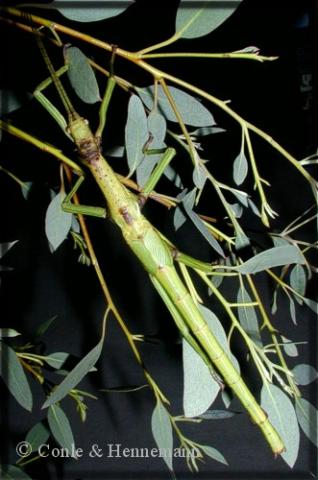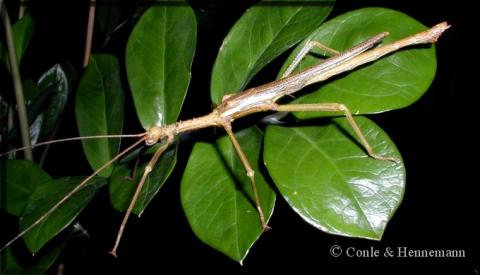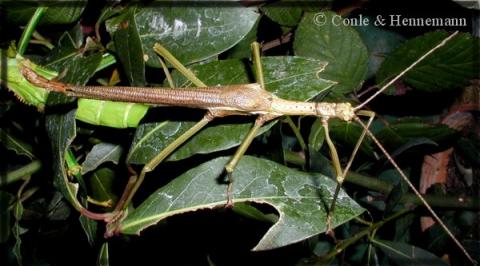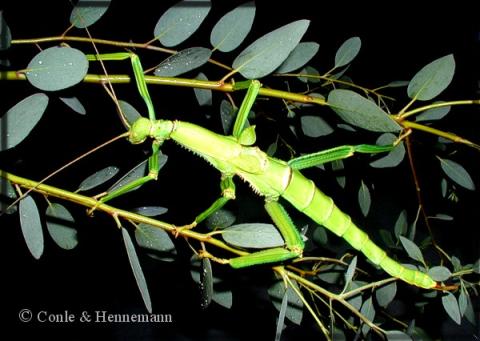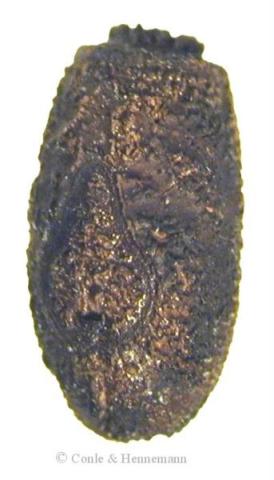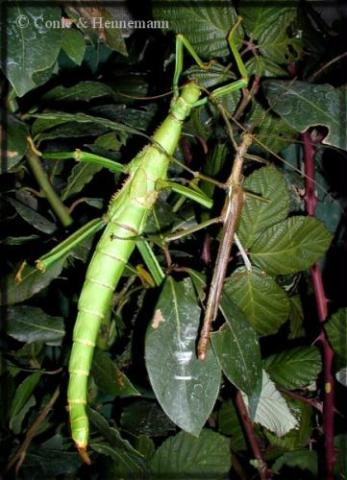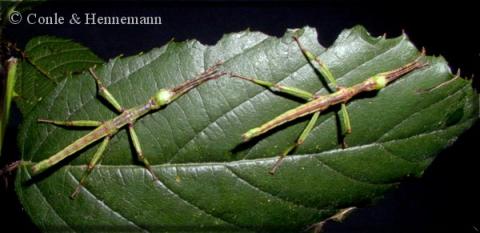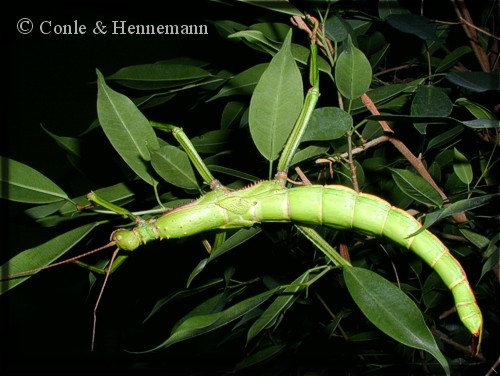
Genus
Species
Stock
CLP
19
PSG
260
Culture status
In culture
Foodplants
Eucalyptus spp.
Bramble (Rubus spp.)
Oak (Quercus robur)
Acacia sp.
Breeding notes
(by Giacomo Ricca)
General Notes
- etymology - from the Greek διαφέρω (diaphero) which means literally to carry or bear into different directions and from the Latin gigas which means gigantic
- until 2014 4 different Diapherodes species are or have been in culture – see PSG list on Phasmatodea.com
- this species is endemic to different Caribbean islands - e.g. Grenada
_________________
Females
- big phasmids, 15-16 cm long
- beautiful green coloration over the whole body
- mesothorax and metathorax has laterally a row of pink spines
- spines on the metathorax legs
- yellow antennas 7 cm long
- some small humps on the mesothorax
- fore wings undeveloped
- suckers between nails which glue them to the branches
- yellow eyes
_________________
Males
- medium sized, 11 cm long
- brown all over the body, with green spots on metathorax and mesothorax near legs
- brownish antennas 8 cm long
- fore wings as well as hind wings well developed
- first part of the hind wings are bordered with a white band
- hind wings color may vary from light brown to reddish
_________________
Nymphs
- about 30 mm (L1)
- brownish with green head (L1)
- generally green from L2 on
- from L3 sex can be distinguished by naked eye
_________________
Eggs
- about 5 x 3 mm
- dark brown
- surface slightly textured
- egg-shaped
_________________
Food Plants
- Eucalyptus (Eucalyptus spp.)
well accepted at all stages. They eat mainly leaves but partially also fresh and soft branches. It is not the food plant in the wild! - bramble (Rubus spp.)
quite well accepted by adults - oak (Quercus spp., Quercus ilex)
_________________
Behavior
- males not able to fly but can make long jumps
- females wing do not jump
- females fling the eggs away with a swing of their abdomen
- mating occurs at any time, males can stay with one female for some hours
- nymphs are calm, even when they are being touched
- adult males crawl away or even jump when threatened
- no other defensive behavior observed
_________________
Development
- incubation (on a wet paper towels sheet or vermiculite) at 20-23°C takes about 8-9 months
- hatching ration can be very high (75%)
- males become adults in about 5 months and live for another 6 months
- females become adults in about 6 months and live for 9-12 months
- few weeks after mating, the females start to fling eggs away, 1-2 per day
_________________
Breeding Notes
- easy to keep species and very beautiful
- humidity at 60% is fine for the whole development
- temperature can be between 20°C and 27°C
- a wet paper towels at the bottom of the cage keeps the correct humidity level
- spray once a day during summer, especially in the evening
- nymphs can be kept in a Faunabox (or similar cages)
- make sure that they have always the space to molt, especially just before becoming adult
- nymph mortality is usually very low
- move nymphs to a bigger cage as they grow bigger
- a cage of at least 60 x 49 x 30 cm should be provided 5 adult couples of this species


















